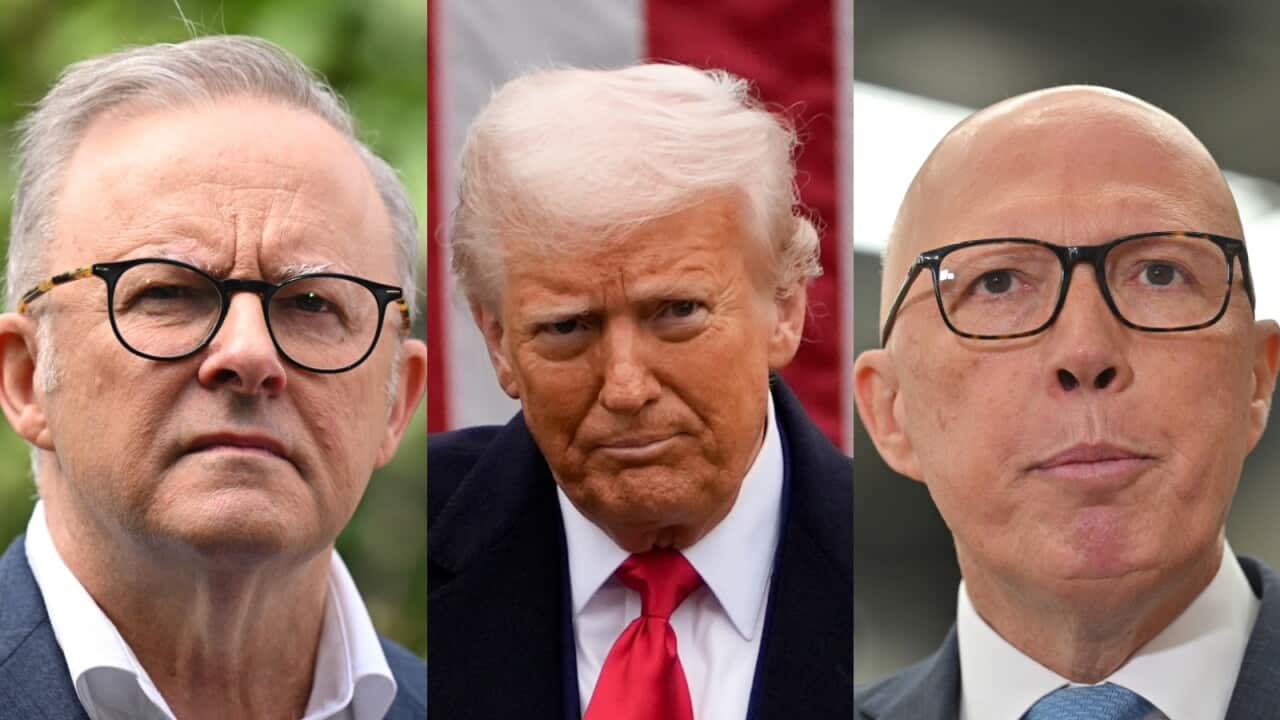On Thursday, United States President Donald Trump marked what he called 'Liberation Day,' unveiling his highly anticipated trade tariffs and outlining his "dreams" for America.
"April 2 2025 [US time] will be forever remembered as the day American industry was reborn, the day America's destiny was reclaimed, and the day that we began to make America wealthy again," Trump said at the White House Rose Garden.
"For decades, our country has been looted, pillaged, raped and plundered by nations near and far, both friend and foe alike."
In his speech, Trump announced sweeping tariffs targeting most countries globally, followed by a declaration of a "national emergency".
He closed by promising a "golden age" for the US and detailing the expected impact of tariffs on the nation's economy.
How do the new tariffs work?
Almost every country will be impacted by these new tariffs — some more, others less.
Out of the 190-plus countries in the world, Trump's decision applies to most.
The White House has released a list of about 180 countries and territories that will face the new set of 'reciprocal tariffs'.
What does reciprocal tariffs mean?
The term reciprocal tariffs suggests the Trump administration is hitting countries with similar levies to what they are placing on the US.
But that does not appear to be the case.
Prime Minister Anthony Albanese responded to Trump's tariff announcement by saying: "President Trump referred to reciprocal tariffs. A reciprocal tariff would be zero, not 10 per cent."
All countries listed have been levied at least a 10 per cent tariff, while around 60 countries — labelled as the 'worst offenders' — will face higher rates.
Experts say the Trump administration appears to have arrived at its 'reciprocal tariff' figures by taking the 2024 US trade deficit with a country and dividing it by that country's exports to the US. It then applied a 50 per cent 'discount'.
For example, the chart Trump displayed (below) says China imposed 67 per cent tariffs (including currency manipulation and trade barriers) on the US.

US President Donald Trump and the White House shared a series of charts on social media detailing the tariff rates they say other countries impose on the US. Source: Getty / Chip Somodevilla
Australia, which imports more goods from the US than it exports to it, and some other countries including the UK, Brazil, Turkey and Saudi Arabia, have been hit with a "minimum baseline tariff" of 10 per cent.
The rationale for the 10 per cent figure is not clear, but may relate to what the administration sees as trade barriers, for example restrictions on imports of US beef.
Richard Holden, professor of economics at the University of NSW's Business School, told SBS News: "Different countries are being hit with different levels of tariffs, but no-one's getting away with anything less than 10 [per cent]."
"Countries will face different levels of tariffs based on the White House's view about what those tariff barriers are," he said.
What kind of America is Trump dreaming of?
Trump has promised the tariffs would result in "jobs and factories coming roaring back into" the US.
He said ultimately this would mean "stronger competition and lower prices for consumers".
But Holden said that may not be true.
"This is, really, a tax on American consumers. It's just going to make things that Americans buy more expensive. So, it's just like even putting on a big national sales tax," he said.
Bryce Wakefield, the CEO of the Australian Institute of International Affairs, told SBS News that calling the event Liberation Day is an "excuse for what may very well be disastrous policy".
But Trump has defended the policy, saying the imposition of tariffs was necessary because "foreign trade and economic practices have created a national emergency".
Why did Trump declare a national emergency?
Following the announcement, the White House released a fact sheet titled 'President Donald J. Trump Declares National Emergency to Increase our Competitive Edge, Protect our Sovereignty, and Strengthen our National and Economic Security'.
"President Trump is invoking his authority under the International Emergency Economic Powers Act of 1977 (IEEPA) to address the national emergency posed by the large and persistent trade deficit that is driven by the absence of reciprocity in our trade relationships and other harmful policies like currency manipulation and exorbitant value-added taxes (VAT) perpetuated by other countries."
"Large and persistent annual US goods trade deficits have led to the hollowing out of our manufacturing base; resulted in a lack of incentive to increase advanced domestic manufacturing capacity; undermined critical supply chains; and rendered our defense-industrial base dependent on foreign adversaries," the document stated.
The tariffs have been central to Trump's vision to strengthen the US economy and move the country to what he describes as a new "golden age".
"This will be indeed the golden age of America. It's coming back. We will come back very strongly," Trump said.
Wakefield said the phrase is commonly used among nationalists.
"The 'golden age' in nationalist rhetoric is simply an imagined time in the past where things were always better," he said.
"And in every nationalist's mind, the actual period of that golden age might be different. It's left vague for a reason."
Which Biden-era 'damages' is Trump talking about?
The White House fact sheet lays out a variety of reasons to support Trump's tariffs.
"These tariffs are central to President Trump's plan to reverse the economic damage left by President [Joe] Biden and put America on a path to a new golden age," it states.
"President Biden squandered the agricultural trade surplus inherited from President Trump's first term, turning it into a projected all-time high deficit of [US]$49 billion ($78 billion).
"'Made in America' is not just a tagline — it's an economic and national security priority of this administration. The president's reciprocal trade agenda means better-paying American jobs making beautiful American-made cars, appliances, and other goods."
Holden highlights what the wording truly implies.
"He [Trump] is talking about the reduction in the US manufacturing sector that's been going on for, you know, four decades or so. So that's what he's talking about," he said.
Can Trump really bring back the 'golden age'?
Some experts believe Trump referred to the 1950s — an era when the US faced a post-World War Two economic boom.
Shane Oliver, chief economist at fund manager AMP, believes Trump's aim to manufacture all kinds of products in the US is a "pipe dream".
"I know America, every so often, has these dreams of returning to the 1950s ... every so often [the US] has these retro moments of dreaming to go back in the past," he said.
"But this appears to be another one, obviously more extreme than what we saw [before].
"I think the golden age he's referring to is one where production, manufacturing returns to the US, cars are fully made in America, [same with] pharmaceuticals, farming, and so on.
"It's gonna take many years for that to happen ... Lots of companies will be unsure ... whether to bring production back now or to wait and see whether these tariffs stick. Or, a change in government in the US could see them reverse.
"I think there's a lot of uncertainty around it."
One of the products that Trump singled out in his speech was Australian beef.
He said the US imported $3 billion of Australian beef last year.
How will the US tariffs impact the global economy?
The tariff announcement was made shortly after Wall Street trading closed, and US stocks began to fall in after-hours trading.
The Asian stock market also fell, while gold prices hit a record high. The Australian share market also declined sharply after the speech.
"It's obviously gonna have a big disruptive impact on the global economy; there's obviously gonna be a hit to consumer confidence, business confidence, supply chains, and so on," Oliver said.
"That obviously can have an impact globally, particularly if other countries retaliate."
LISTEN TO

Trump announces tariffs: 'the day America's destiny was reclaimed'
SBS News
08:50
Just ahead of the announcement, Ursula von der Leyen, the president of the European Commission, said if necessary, Europe has "a strong plan to retaliate".
While Canada has retaliated by imposing 25 per cent tariffs on goods from the US, Australia maintains.
Holden said no-one will benefit from these tariffs, not even the Americans.
"Let's be clear, nobody benefits from tariffs. That's why over the last 50 years around the world, we've had coordinated global efforts to try and remove trade barriers.
"The world is better off when no-one has any tariffs on anything. And everybody's worse off when there are tariffs.
"This is not good news really for anybody."





